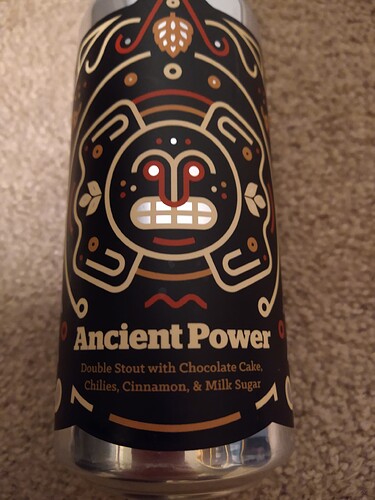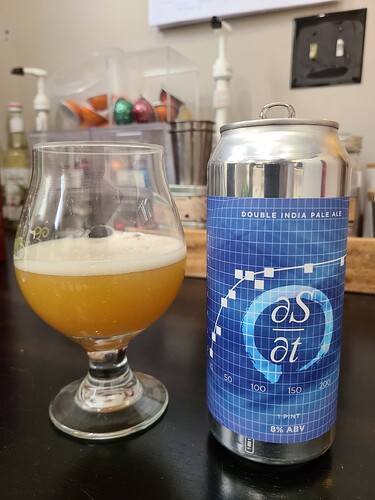I think I’ve done this hating sours bit before though so if anyone has got another beer style they like that they want me to ruin for you post away. I actually like sours even though I think the only beer anyone actually needs is a pale beer brewers with california ale yeast and a heavy dose of hops. So come at me beer bros jkjk
Hefeweizen
gogogogogogo…
Ass tasting yeast that should have gone extinct around the invention of microscopes. The only way to make beers brewed with wheat palatable. Stupid flavors to have in a drink, like it’s made for children who enjoy the taste of bubble gum. So old they were made during a time when people used hops that just naturally grew in your town. If you ordered this from me at a craft beer restaurant I’d just assume you were clueless and just wanted to buy this style to fit in with all the beers nerds who will never respect you with this weak purchase.
Yeah, well IPAs suck. I’ll hang up and listen.

Do you really want to drink a beer fermented with billions of live german organisms, I thought we won ww2 and didnt let the germans invade? Lets create trillions of jobs for american yeast cells right here and drink an American IPA. You know who got rid of all the shitty flavors in yeast? Americans did! The best yeast in the world is made right here in San Diego by White Labs, used by all the best craft breweries in America.
German hops are weak compared to American hops because of American ingenuity and a desire to make everything better for the good of humanity. You can’t make german hops better because they wouldn’t be authentic. You have to use crappy hops in your crappy beer. If you like german hops you’re probably one of those people who say “I wish I could smoke the weed hippies did in the 60s, not this strong stuff they got now”. America developed the best hops and they grow the best in america, so drink an American IPA or you hate freedom!
Customer: I’m new to craft beer, do you have any recommendations?
Me: Sure, San Diego is known for making IPAs, and this is our best one on the menu right now. The hop flavors will blow your mind on what’s possible in a beer. You know the saying when in rome? Welp this is rome and here is the beer.
Customer: But I like light beer
Me: Well fuck me then, I tried. How about a blonde ale?
fyp
I love it after you have a glass or two and then remember to look at the percentage, and it’s 10% or something and you’re like “shit I can have another one”
I would find it tough to name wines that express the essence, as there is a lot of variety. Also some of the most widely available ones can be a little boring
But you could go:
Oregon Willamette Valley region for pinot. Or Burgundy for old-school, this gets pricy fast though.
Argentina for malbec
Anywhere for cab (lotta variety here). Australia has some bargains
Merlot is tough because there are some bad ones out there. Might have to pay a little extra $ to make sure you get a good one. Could go Napa Valley or Washington state. Could also go St. Emilion from France for some really good ones, although these are not pure merlot, I think they’re usually 70% or so.
Red zin. Seghesio from CA has some good ones for the price
Its only a Lager if it comes from the Lagerdorf region in Germany, otherwise its just sparkling yellow piss
Really though drink what you want. If you asked me for a suggestion on craft beer and said you liked blonde ales, to me it means you like the taste of ale yeast, that’s the predominant flavor because the beer is so light in malt and hops, and so I could tell you to try any beer with belgian ale yeast if you wanted to branch out, and that would be perfectly fine.
It’s hard to toss out recommendations, because it’s hard to know what you have available in your stores (and a lot of our favorites would have to be ordered from the winery directly), but one rule of thumb that tends to correlate with wine quality more than price is that the more specific the wine is about where it comes from, the better it tends to be (at least to the average palettes of wine enthusiasts, which may or may not line up with you). So, if you see a wine label that says its from “California,” give it the side eye. If it’s from “Napa County,” or “Sonoma County,” that’s a little more respectable, but they’re also trying to capitalize on the Napa Valley brand with wine that wasn’t grown in Napa Valley (otherwise it’d be labeled Napa Valley). Having a Napa Valley label is good, but it’s generally better still if it’s even more specific than that, like being from Rutherford, or Calistoga. Some wineries will specify particular vineyards that their wines come from, and these are usually their very best. At the extreme end, Pezzi King puts out Zinfandels labeled by particular rows in their vineyards (e.g. Row 26). They are fantastic.
A lot of things on the label are just marketing material that doesn’t necessarily mean anything, but where the wine is from has to be true. One legally protected term is “estate bottled.” Not “estate” or “reserve” which are meaningless (although they do tend to get thrown on a winery’s better or at least more expensive wines), but “estate bottled” means that all the grapes are from a single legally designated American Vinicultural Area (AVA, like Sonoma Valley, or one of the sub-AVAs thereof), the winery on the label managed the farming of those grapes, and all the wine making start to finish happened at that winery. No winery is going to go through the trouble of proving and guaranteeing all those things unless they think the wine is pretty good, and a decent number of customers think so, too.
Unfortunately, different countries have different labeling systems. In France, they label their legally protected appellations with AOC. In Italy, they’re labeled as DOC, with the very best earning a DOCG designation. Spain uses DOP and DOCa, the latter being the top tier regions. I’m not sure about South America, South Africa, and Australia, but those are a few things to look for in European wines.
Honestly, Costco’s Malbec is like $7 and pretty decent if you’re a member there. It’s on the fruit-forward end of the spectrum, so if it is or is not your bag, that may be why, and there are earthier and more tannic ones out there, too (for better or for worse, depending on your tastes). A lot of the appeal of Argentine Malbecs is that good ones can be had for cheap.
Wookie said it better than I did
If I gave you the last couple really good (say) pinots I had, they’d be from small wineries that aren’t really in wine stores and I’d look like a pretentious jackass. Which maybe I am, but who wants to look like one. If I had to name a nationally distributed pinot that gives the essence of pinot, I’d be at a loss.
So like Wookie said, maybe pick a region or a designation and give one a try. To continue with the malbec theme, if you pick an Argentinian one at random, even if it’s $15 or less, odds are it could be pretty good. Or if you decide to pay attention to ratings or awards, or to listen to the wine store staff, then yeah, just grab one on that basis.
As someone mentioned up thread, tastings are goods ways to try a couple different ones, whether it’s a winery tasting or having some people over, with everyone bringing a bottle. That way you’re not paying for whole bottles
I’ve always thought this brewery (Burlington Beer Company) was overrated by the locals here. But this one intrigued me.
Out-goddamn-standing. Legit top 10 beer all time for me. I have to go back to the beer store near me to get more of this.
Sounds more like a milkshake than a beer
http://www.moderntimesbeer.com/receivershipupdate
AN UPDATE ON THE IMMEDIATE FUTURE OF MODERN TIMES
If you’ve been following us recently, you may know much like many others in the beer and hospitality industry, Modern Times has been through a tough two years—tough enough that we’ve recently had to make major cutbacks to both our personnel and our geographic footprint.
Let’s focus on the most important thing first. Modern Times remains committed to our drinkers, our brews, and delivering great times when you visit us. Through the challenges, our coworkers, distributors, buyers, drinkers, and patrons have been and continue to be vital to us.
The intense and rigorous work of restructuring the business coincides with other massive challenges: revitalizing our remaining four tasting rooms and restaurants; struggling with rising gas prices; a constrained trucking and logistics system; and supply chain issues with aluminum cans. As these issues have intensified, so have our concerns about financials, cash flow, and profit.
Our senior secured lender (AKA bank) tightly monitors the company’s finances and, though we have been working diligently with their officers over the past weeks, they have commenced litigation which we believe will result in a court-ordered receivership sale of Modern Times.
So, what is a receivership? It’s complicated, but it boils down to this: our bank nominates someone to oversee the sale of the Modern Times business. Once approved by the court, this nominated person, or “receiver,” will be the final word on our financial decisions for the immediate future, and in charge of the
sale of the brand to interested parties.While this isn’t a comfortable position for any company to be in, a receivership should hopefully allow Modern Times to be sold as a “going concern,” as opposed to “turning off the lights” and liquidating the equipment and inventory. A going concern sale would raise the odds of the new buyer keeping our talented staff, amazing products, and renowned customer experience intact. Obviously, this is not an ideal
situation, but across a field of exceedingly difficult choices, it’s the best one available and is far preferable to ceasing operations entirely. We expect this process to move swiftly. Financial
situation aside, we have an amazing brand.On a more personal note—those of us who have experienced the last two years with Modern Times are absolutely certain of one thing: none of us would still be here if we didn’t care deeply about this brand and believe in its future. This has been an incredibly tough decision in a series of tough decisions; one more difficult message to write in a long line of difficult messages. But we are not done, and we are not giving up. Far from it. We’re still making amazing beer. We’re still roasting amazing coffee. We’re still pressing forward, and we still believe that there are far better days ahead for both our staff and our fans.
We thank all of you for your continued support and patronage during these difficult times. It has meant the world to us, and we’re still working hard to make sure it’s rewarded with many more beers, coffees, and good times in the future.More to come.
Prime example of how expansion can kill a business.
That sucks. I started seeing modern times in chain supermarkets in New Mexico and Colorado last year and thought they were doing great. Too bad the expansion led to financial troubles.

